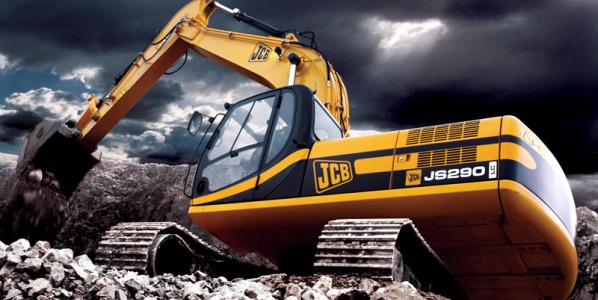
Earthmoving and construction equipment company JCB has high aspirations. The world’s third-largest construction equipment manufacturer by volume, is banking on the strong Indian construction and agricultural sectors to drive market growth.
JCB India’s 2016 revenue and sales volume grew almost 40% over 2015. With the Union budget of India for 2017-2018 focus on additional investments in farming and infrastructure building, the company hopes to experience strong growth in 2018, albeit not at the same levels as a couple of years ago.
LiveLink Telematics
In a strategic move to strengthen the value of its products and focus on long-term customer value, JCB implemented LiveLink telematics: a remote monitoring service of construction equipment to deliver information on operation and service of the equipment. Designed by Wipro’s After Market Solutions team and deployed on the company’s cloud-based Looking Glass industrial asset platform, LiveLink connects more than 50,000 construction equipment units, allowing owners and operators to monitor the efficiency and health of the equipment, reduce idle time and fuel consumption, and identify small equipment problems that might lead to unscheduled downtime.
Think Market Strategy, Not Technology
Compared to the lofty ambitions of many telematics projects that aspire to deliver predictive service and maintenance—often at a high cost and limited success—JCB’s initial goals were quite modest: improve service operations by receiving remote alerts and knowing the equipment location.
JCB knew that the success of a remote monitoring product is hinged on equipment owners willingness to subscribe to the service.
To help drive wide and sustained market adoption, JCB gives equipment owners a free three-year subscription to LiveLink, which gives them ample time to learn how to use the service effectively and realize its benefits. Furthermore, for owners of older equipment, JCB offers an aftermarket option.
Long-term success of telematic solutions requires more than a remote monitoring IoT technology infrastructure. It requires an ecosystem of solution providers that offer a portfolio of management tools and subscription services such as fleet management, rental equipment management, and service planning and optimization. The LiveLink system is built upon an open platform that encourages fleet owners and JCB business partners to build and integrate additional applications and services at a lower effort than bespoke implementations.
Connectivity Drives Value Differentiation
The construction equipment industry is highly competitive. Construction equipment purchase decisions are driven primarily by cost, durability and resale value, and buyers focus on increased productivity and fast amortization of capital equipment investments by maximizing uptime and optimizing production efficiency. Telematics services offer fleet owners as well as the individual owner-operator additional cost-effective means to reduce unplanned downtime and optimize the operation of their expensive assets.
Competing Against Giants
Critics of India’s Prime Minister Narendra Modi are quick to fault him for lack of focus and strategy, and launching glitzy initiatives that are not followed through. Still, the World Bank expects India to achieve 7.1% growth this year before edging up to 7.5% in 2018, and 7.7% in 2019. Not shabby at all. And JCB wants to ride this economic wave.
But JCB is not the only construction equipment company to recognize this potential. Rivals giants such as Caterpillar, Komatsu and Hitachi, some operating in India for much longer than JCB, are also eyeing this growth opportunity.
JCB believes that Wipro’s Looking Glass IoT platform and the LiveLink service will help it compete effectively and capture some of this opportunity by amplifying brand differentiation and driving customer loyalty.
Image: JCB JS290 Excavator
